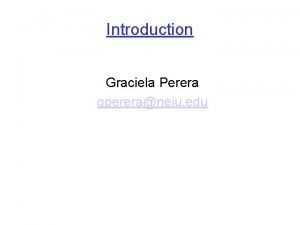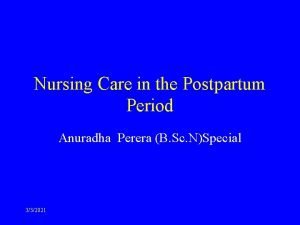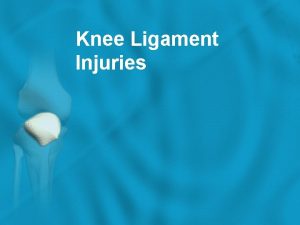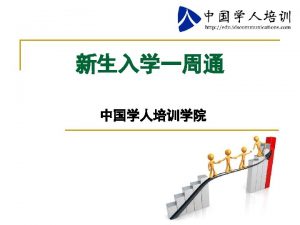Introduction Graciela Perera gpereraneiu edu Chapter 1 Introduction







- Slides: 7

Introduction Graciela Perera gperera@neiu. edu

Chapter 1: Introduction Our goal: Overview: q get “feel” and q protocol layers, service models terminology q more depth, detail later in course q approach: v use Internet as example Introduction 1 -2

Organization of air travel ticket (purchase) ticket (complain) baggage (check) baggage (claim) gates (load) gates (unload) runway takeoff runway landing airplane routing q a series of steps Introduction 1 -3

Layering of airline functionality ticket (purchase) ticket (complain) ticket baggage (check) baggage (claim baggage gates (load) gates (unload) gate runway (takeoff) runway (land) takeoff/landing airplane routing departure airport airplane routing intermediate air-traffic control centers arrival airport Layers: each layer implements a service v via its own internal-layer actions v relying on services provided by layer below Introduction 1 -4

Why layering? Dealing with complex systems: q explicit structure allows identification, relationship of complex system’s pieces v layered reference model for discussion q modularization eases maintenance, updating of system v change of implementation of layer’s service transparent to rest of system v e. g. , change in gate procedure doesn’t affect rest of system q layering considered harmful? Introduction 1 -5

Internet protocol stack q application: supporting network applications v FTP, SMTP, HTTP application q transport: host-host data transfer v TCP, UDP transport q network: routing of datagrams from network source to destination v IP, routing protocols q link: data transfer between neighboring network elements v link physical PPP, Ethernet q physical: bits “on the wire” Introduction 1 -6

source message segment Ht datagram Hn Ht frame Hl Hn Ht M M Encapsulation application transport network link physical Hl Hn Ht M switch destination M Ht M Hn Ht Hl Hn Ht M M application transport network link physical Hn Ht Hl Hn Ht M M router Introduction 1 -7












